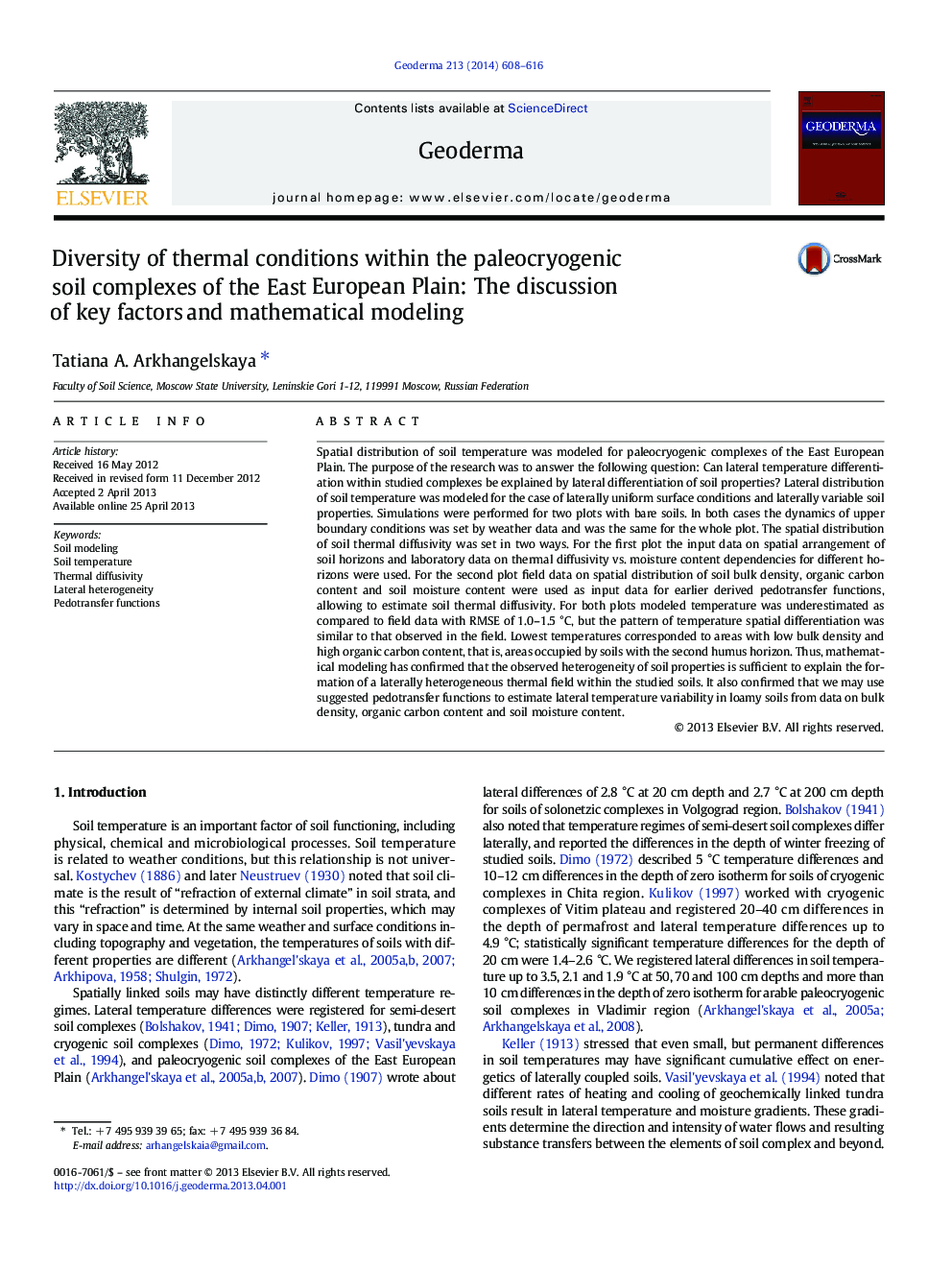| کد مقاله | کد نشریه | سال انتشار | مقاله انگلیسی | نسخه تمام متن |
|---|---|---|---|---|
| 6409045 | 1629479 | 2014 | 9 صفحه PDF | دانلود رایگان |
- Areas with low bulk density and high carbon content have lowest temperatures
- Heterogeneity of soil properties explains lateral variability of temperature
- Spatial patterns of simulated and measured soil temperature are similar
- Mathematical model underestimates soil temperature with RMSE 1.0-1.5 °C
Spatial distribution of soil temperature was modeled for paleocryogenic complexes of the East European Plain. The purpose of the research was to answer the following question: Can lateral temperature differentiation within studied complexes be explained by lateral differentiation of soil properties? Lateral distribution of soil temperature was modeled for the case of laterally uniform surface conditions and laterally variable soil properties. Simulations were performed for two plots with bare soils. In both cases the dynamics of upper boundary conditions was set by weather data and was the same for the whole plot. The spatial distribution of soil thermal diffusivity was set in two ways. For the first plot the input data on spatial arrangement of soil horizons and laboratory data on thermal diffusivity vs. moisture content dependencies for different horizons were used. For the second plot field data on spatial distribution of soil bulk density, organic carbon content and soil moisture content were used as input data for earlier derived pedotransfer functions, allowing to estimate soil thermal diffusivity. For both plots modeled temperature was underestimated as compared to field data with RMSE of 1.0-1.5 °C, but the pattern of temperature spatial differentiation was similar to that observed in the field. Lowest temperatures corresponded to areas with low bulk density and high organic carbon content, that is, areas occupied by soils with the second humus horizon. Thus, mathematical modeling has confirmed that the observed heterogeneity of soil properties is sufficient to explain the formation of a laterally heterogeneous thermal field within the studied soils. It also confirmed that we may use suggested pedotransfer functions to estimate lateral temperature variability in loamy soils from data on bulk density, organic carbon content and soil moisture content.
Journal: Geoderma - Volume 213, January 2014, Pages 608-616
